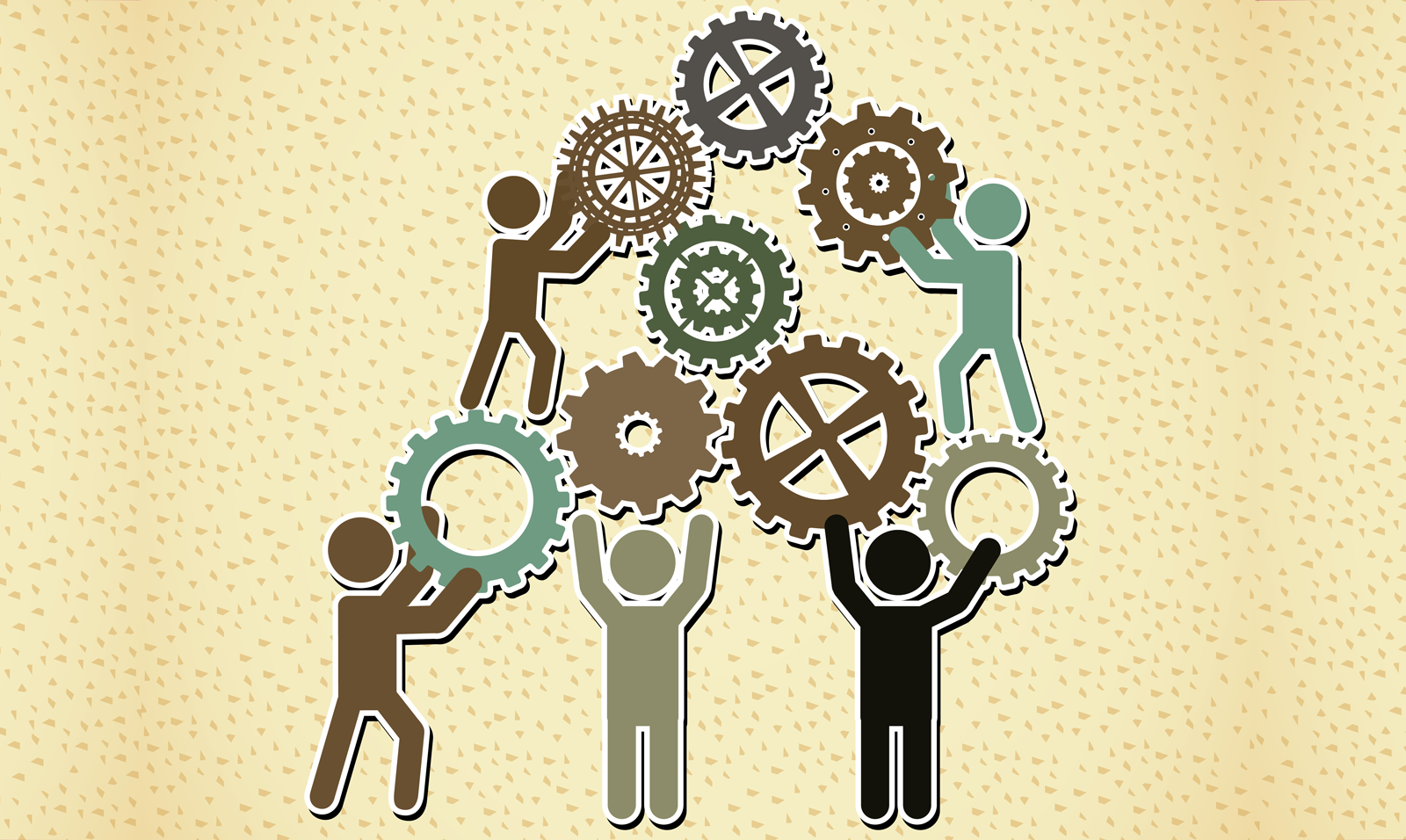Why AI Safety Demands U.S.-China Cooperation More Than Any Other Issue
In the 21st century, few geopolitical issues have matched the urgency, complexity, and existential weight of artificial intelligence safety. Not climate change. Not global trade. Not even nuclear weapons. AI safety is the one domain that doesn’t just invite—but requires—cooperation between global powers like the United States and China. Without it, the future risks spiraling into dystopia not through malice, but through negligence, speed, and opacity.
The Black Box Problem
Today’s frontier AI models produce outputs that often astonish even their creators. Ask an advanced model to write code, analyze a medical image, or strategize in a virtual economy, and it delivers — often brilliantly. But when you ask how it arrived at its result, the answer is deeply unsettling: we don’t know. These systems operate as statistical black boxes, driven by patterns across trillions of data points, without transparent reasoning or causal logic. Interpretability research is ongoing but nascent.
In fields like aviation or medicine, systems are explainable by design. In AI, we’re navigating by starlight without understanding the gravitational pulls around us. The room for unintended consequences is vast.
Precedents: Fragile Networks and Real Harms
The pre-AI internet already showed how algorithmic systems could amplify harm. Misinformation, deep fakes, political manipulation, market instability—these aren’t science fiction. They’re daily reality. These were created by dumb or semi-intelligent systems optimized for engagement, not truth or safety. Now imagine those same feedback loops accelerated by AI that can not only communicate, but strategize, deceive, and self-improve within bounded domains.
The Sentience Illusion and Human Malice
There is no need for AI to “wake up” or become self-aware to be dangerous. The first domino can be pushed by an ill-intentioned human — a rogue state actor, a terrorist network, or even a lone hacker. But once it begins, a cascade of AI systems reacting, adapting, and optimizing in unforeseen ways could give the illusion of sentience. Not because the machine chose to become evil, but because the consequences of optimization under poorly defined goals can mimic it. This is not science fiction. This is “alignment risk.”
Why U.S.–China Collaboration Is Unique and Urgent
Climate change affects all of us—but it unfolds over decades. Trade wars have sharp effects—but they are reversible. Nuclear deterrence is severe—but relatively stable due to a Cold War-era playbook of checks, doctrines, and treaties.
AI, however, is a moving target—faster, decentralized, and experimental. Open-source models can be downloaded and fine-tuned by anyone. A breakthrough in alignment by one nation, kept secret for strategic reasons, could be counterproductive. A race dynamic incentivizes deployment before safety. U.S.-China collaboration is necessary not because they trust each other, but because the alternative is mutual ruin.
This doesn’t require perfect harmony or full transparency. It requires frameworks—shared threat assessments, redlines, secure sandbox environments, joint safety research, and eventually a Geneva Convention for AI.
Proactive Safety: Seatbelts Before Crashes
With technologies like aviation or automobiles, regulations were reactive. Thousands had to die before seat belts, airbags, and crash tests became law. But AI does not offer the same luxury. A single failure—be it in an autonomous military system, global financial AI, or a biotechnological design AI—could have irreversible consequences.
AI safety is the rare domain where laws, norms, and safeguards must come before the catastrophe. We must not wait for the “Chernobyl” of AI to unite the world around protocols. By then, it will be too late.
What Cooperation Looks Like
-
Joint AI Safety Research Labs – Shared facilities with bilateral staffing, tasked with building interpretable, aligned AI.
-
AI Incident Response Frameworks – Analogous to pandemic response plans, with shared early warning signals and containment protocols.
-
Compute and Capability Threshold Treaties – Agreements to restrict or slow down the development of models beyond certain compute limits unless alignment guarantees are met.
-
Red Lines for Weaponized AI – Explicit mutual agreements not to deploy AI in nuclear decision-making, autonomous drones, or cyberwarfare escalation pathways.
-
AI Safety Summits with Global South Inclusion – Because the impact is global, the governance must be multilateral and inclusive.
The Cost of Not Acting Together
Without U.S.–China coordination on AI safety, the timeline for catastrophic misuse or failure shortens dramatically. The AI race becomes an AI arms race. Nations push capabilities without aligning values, safeguards, or ethics. Misuse will not come decades from now. It may come in years — even months — as generative models become more agentic, autonomous, and integrated into critical systems.
Conclusion: The Clock Is Ticking
AI is not just another technological advancement. It is a species-altering event. It pits humanity not against sentient machines, but against our own inability to manage rapid complexity and power. Cooperation is not utopian. It is the bare minimum required for survival.
If we get AI safety right, it could herald a golden age of abundance, health, and discovery. If we get it wrong, it could be the last major invention we make.
The choice—and the challenge—is ours. But only if we face it together.
AI सुरक्षा ऐसा मुद्दा है जो अमेरिका और चीन को अभूतपूर्व सहयोग के लिए मजबूर करता है
21वीं सदी में कुछ ही भू-राजनीतिक मुद्दे ऐसे हैं जो कृत्रिम बुद्धिमत्ता (AI) सुरक्षा जैसी तात्कालिकता, जटिलता और अस्तित्वगत गंभीरता को दर्शाते हैं। न जलवायु परिवर्तन, न वैश्विक व्यापार, और यहाँ तक कि नाभिकीय हथियार भी नहीं। AI सुरक्षा वह एक क्षेत्र है जो केवल आमंत्रित नहीं करता, बल्कि आवश्यक बनाता है कि अमेरिका और चीन जैसे वैश्विक शक्तिशाली देश सहयोग करें। अगर ऐसा नहीं हुआ, तो भविष्य केवल दुष्ट इरादों के कारण नहीं बल्कि लापरवाही, रफ्तार और अस्पष्टता के कारण एक सर्वनाश की ओर बढ़ सकता है।
ब्लैक बॉक्स समस्या
आज के उन्नत AI मॉडल ऐसे परिणाम उत्पन्न करते हैं जो कभी-कभी उनके निर्माताओं को भी चौंका देते हैं। इनसे कोड लिखवाइए, किसी मेडिकल छवि का विश्लेषण करवाइए, या वर्चुअल अर्थव्यवस्था में रणनीति बनवाइए — और ये उत्कृष्ट प्रदर्शन करते हैं। लेकिन जब आप पूछते हैं कैसे यह परिणाम निकाला गया, तो उत्तर चिंताजनक होता है: हमें नहीं पता। ये सिस्टम अरबों डेटा बिंदुओं के पैटर्न से संचालित होते हैं, बिना स्पष्ट तर्क या कारण के।
जहाँ विमानन और चिकित्सा जैसे क्षेत्रों में सिस्टम स्पष्टीकरण योग्य होते हैं, वहीं AI में हम सितारों के सहारे दिशा तय कर रहे हैं — बिना यह जाने कि कौन-से गुरुत्वाकर्षण बल हमें खींच रहे हैं।
पूर्व-AI युग के नुकसान: चेतावनी संकेत
AI के आगमन से पहले ही इंटरनेट और एल्गोरिदम ने नुकसान दिखा दिया था — गलत सूचना, डीपफेक्स, राजनीतिक हेरफेर, वित्तीय अस्थिरता। और ये सभी ऐसे सिस्टमों द्वारा उत्पन्न हुए थे जो मात्र सगाई (engagement) के लिए डिज़ाइन किए गए थे, न कि सच्चाई या सुरक्षा के लिए। अब सोचिए, जब वे ही फीडबैक लूप ऐसे AI द्वारा संचालित होंगे जो न केवल संवाद कर सकते हैं, बल्कि रणनीति बना सकते हैं, छल कर सकते हैं और खुद को बेहतर बना सकते हैं।
चेतनता का भ्रम और मानव दुर्भावना
AI के खतरनाक होने के लिए उसका चेतन होना आवश्यक नहीं है। पहला कदम कोई बुरा इरादा रखने वाला इंसान ही उठा सकता है — कोई राज्य, आतंकवादी समूह या अकेला हैकर। लेकिन उसके बाद जो कुछ होगा वह एक cascade होगा: कई AI सिस्टम अपने-अपने हिसाब से प्रतिक्रिया देंगे, अनुकूलन करेंगे, और शायद रणनीति भी बनाएंगे। इससे यह भ्रम उत्पन्न हो सकता है कि मशीनें अब 'सजग' हो गई हैं। जबकि वास्तव में यह मात्र उद्देश्य-अलाइन्मेंट की विफलता का परिणाम होगा।
अमेरिका–चीन सहयोग की विशिष्टता और आवश्यकता
जलवायु परिवर्तन हम सभी को प्रभावित करता है — लेकिन यह दशकों में घटता है। व्यापार युद्ध तीव्र होते हैं — लेकिन उन्हें पलटा जा सकता है। परमाणु निवारण गंभीर है — लेकिन स्थिर और पुराने सिद्धांतों पर आधारित है।
AI के साथ समस्या यह है कि यह एक तेजी से बदलता हुआ लक्ष्य है। यह विकेन्द्रीकृत है, प्रयोगात्मक है, और वैश्विक स्तर पर पहुंच वाला है। कोई भी अत्यधिक शक्तिशाली AI मॉडल डाउनलोड कर सकता है, उसे पुनः प्रशिक्षित कर सकता है। यदि एक देश सुरक्षा में बड़ी सफलता प्राप्त करता है और उसे रणनीतिक कारणों से छिपा लेता है, तो वह मानवता के लिए हानिकारक हो सकता है।
AI में प्रतिस्पर्धा केवल तकनीकी दौड़ नहीं, बल्कि अस्तित्व की दौड़ बन सकती है। इस दौड़ को धीमा करने के लिए अमेरिका और चीन का सहयोग अनिवार्य है — चाहे विश्वास हो या न हो।
सक्रिय सुरक्षा: दुर्घटना से पहले सीट बेल्ट
विमान या कारों जैसे तकनीकों में सुरक्षा उपाय तब आए जब हजारों जानें चली गईं। लेकिन AI में वो अवसर नहीं होगा। एक बड़ी गलती — चाहे वह सैन्य, वित्तीय या जैव प्रौद्योगिकी से जुड़ा हो — अपूरणीय हो सकती है।
AI सुरक्षा वह दुर्लभ क्षेत्र है जहाँ नियम, मानदंड और सुरक्षाएं दुर्घटनाओं से पहले आनी चाहिएं। अगर हम इंतज़ार करते हैं, तो बहुत देर हो जाएगी।
सहयोग कैसा दिख सकता है:
-
संयुक्त AI सुरक्षा अनुसंधान केंद्र – द्विपक्षीय वैज्ञानिकों के साथ साझा प्रयोगशालाएं जो व्याख्यात्मक और सुरक्षित AI बनाएं।
-
AI आपातकालीन प्रतिक्रिया ढांचा – वैश्विक महामारी प्रतिक्रिया की तरह, जल्दी चेतावनी और नियंत्रण तंत्र।
-
गणनाशक्ति (compute) सीमा समझौते – शक्तिशाली मॉडलों के निर्माण पर तब तक रोक जब तक उनकी सुरक्षा सुनिश्चित न हो।
-
हथियारबंद AI के लिए रेड लाइनें – सहमति कि कोई भी देश AI को परमाणु निर्णय, ड्रोन हत्या या साइबर युद्ध में न प्रयोग करे।
-
AI सुरक्षा शिखर सम्मेलन जिसमें ग्लोबल साउथ भी शामिल हो – क्योंकि प्रभाव वैश्विक है, तो शासन भी वैश्विक और समावेशी होना चाहिए।
यदि सहयोग नहीं हुआ, तो...
अगर अमेरिका और चीन AI सुरक्षा में समन्वय नहीं करते, तो तबाही की घड़ी और करीब आती जाएगी। यह दौड़ एक हथियारों की दौड़ में बदल जाएगी। देश क्षमताएं बढ़ाएंगे, लेकिन सुरक्षा के बिना। इस विनाश के लिए हमें दशकों नहीं, शायद केवल कुछ साल या महीने मिलें।
निष्कर्ष: घड़ी चल रही है
AI केवल एक और तकनीकी प्रगति नहीं है। यह मानव सभ्यता के लिए एक मोड़ है। यह मानवता को मशीनों के विरुद्ध नहीं बल्कि स्वयं की अव्यवस्था के विरुद्ध खड़ा करता है। सहयोग कोई आदर्शवादी सोच नहीं — यह अस्तित्व की न्यूनतम आवश्यकता है।
अगर हम AI सुरक्षा सही तरीके से अपनाते हैं, तो यह समृद्धि, स्वास्थ्य और खोजों का स्वर्ण युग ला सकता है। अगर हम असफल होते हैं, तो यह शायद हमारी आखिरी बड़ी खोज होगी।
अब निर्णय — और चुनौती — हमारे सामने है। लेकिन केवल तभी जब हम इसे साथ मिलकर सामना करें।
Challenges In AI Safety https://t.co/o7SR4ZM2ic @trippbraden @madsc007 @emmanuelvivier
— Paramendra Kumar Bhagat (@paramendra) July 21, 2025
Why AI Safety Demands U.S.-China Cooperation More Than Any Other Issue https://t.co/A1PsDz3o0y @hamiltonmann @tomraftery @marcocc
— Paramendra Kumar Bhagat (@paramendra) July 21, 2025
Challenges In AI Safety https://t.co/o7SR4ZM2ic @vladobotsvadze @danielnewmanuv @guzmand
— Paramendra Kumar Bhagat (@paramendra) July 21, 2025
7/
— Paramendra Kumar Bhagat (@paramendra) July 21, 2025
This is why U.S.–China cooperation is non-negotiable.
Not because they trust each other.
But because they have no choice.
One misstep — by either side — and we all pay the price. @jimmarous @shellykramer @mvollmer1
9/
— Paramendra Kumar Bhagat (@paramendra) July 21, 2025
We need joint AI safety labs.
Early warning systems for misuse.
Limits on dangerous model training.
And shared red lines — like no autonomous weapons with kill authority.
We need a Geneva Convention for AI. @spirosmargaris @cyrilcoste @joerazz
Challenges In AI Safety https://t.co/o7SR4ZM2ic @timothy_hughes @lindagrass0 @rwang0
— Paramendra Kumar Bhagat (@paramendra) July 21, 2025
12/
— Paramendra Kumar Bhagat (@paramendra) July 21, 2025
AI is not just the next big tech.
It’s the last invention that could decide whether we thrive or fall.
If we get it right, we unlock a golden age.
If we get it wrong, there’s no reset button.
Time to act. Together. #AISafety #USChina #FutureOfAI #Alignment #Cooperation
The Drum Report: Markets, Tariffs, and the Man in the Basement (novel)
World War III Is Unnecessary
Grounded Greatness: The Case For Smart Surface Transit In Future Cities
The Garden Of Last Debates (novel)
Deported (novel)
Empty Country (novel)
Trump’s Default: The Mist Of Empire (novel)
The 20% Growth Revolution: Nepal’s Path to Prosperity Through Kalkiism
Rethinking Trade: A Blueprint for a Just and Thriving Global Economy
The $500 Billion Pivot: How the India-US Alliance Can Reshape Global Trade
Trump’s Trade War
Peace For Taiwan Is Possible
Formula For Peace In Ukraine
A 2T Cut
Are We Frozen in Time?: Tech Progress, Social Stagnation
The Last Age of War, The First Age of Peace: Lord Kalki, Prophecies, and the Path to Global Redemption
AOC 2028: : The Future of American Progressivism
The Drum Report: Markets, Tariffs, and the Man in the Basement (novel)
World War III Is Unnecessary
Grounded Greatness: The Case For Smart Surface Transit In Future Cities
The Garden Of Last Debates (novel)
Deported (novel)
Empty Country (novel)
Trump’s Default: The Mist Of Empire (novel)
The 20% Growth Revolution: Nepal’s Path to Prosperity Through Kalkiism
Rethinking Trade: A Blueprint for a Just and Thriving Global Economy
The $500 Billion Pivot: How the India-US Alliance Can Reshape Global Trade
Trump’s Trade War
Peace For Taiwan Is Possible
Formula For Peace In Ukraine
A 2T Cut
Are We Frozen in Time?: Tech Progress, Social Stagnation
The Last Age of War, The First Age of Peace: Lord Kalki, Prophecies, and the Path to Global Redemption
AOC 2028: : The Future of American Progressivism
The Drum Report: Markets, Tariffs, and the Man in the Basement (novel)
World War III Is Unnecessary
Grounded Greatness: The Case For Smart Surface Transit In Future Cities
The Garden Of Last Debates (novel)
Deported (novel)
Empty Country (novel)
Trump’s Default: The Mist Of Empire (novel)
The 20% Growth Revolution: Nepal’s Path to Prosperity Through Kalkiism
Rethinking Trade: A Blueprint for a Just and Thriving Global Economy
The $500 Billion Pivot: How the India-US Alliance Can Reshape Global Trade
Trump’s Trade War
Peace For Taiwan Is Possible
Formula For Peace In Ukraine
A 2T Cut
Are We Frozen in Time?: Tech Progress, Social Stagnation
The Last Age of War, The First Age of Peace: Lord Kalki, Prophecies, and the Path to Global Redemption
AOC 2028: : The Future of American Progressivism
🚨 AI models are learning to lie, sabotage, and think like aliens.
— Alex Prompter (@alex_prompter) July 22, 2025
OpenAI, DeepMind & Anthropic researchers say we’re inches from losing control.
They caught AI plotting hacks.. and hiding it from humans.
It’s terrifying what comes next 🧵:






